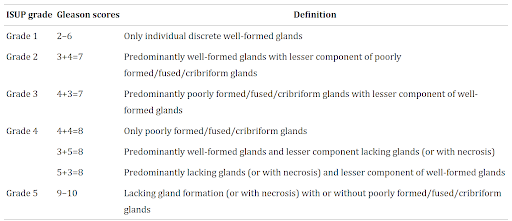An Important Tool in Prostate Cancer Diagnosis and Treatment
Prostate cancer is one of the most common cancers affecting men worldwide. However, not all prostate cancers are the same. Some are slow-growing, while others are more aggressive. The Gleason score is a pivotal tool in assessing the aggressiveness of prostate cancer, allowing clinicians to identify patients who may benefit from immediate treatment and those who can delay treatment. Besides guiding treatment decisions, Gleason scores can also be used to predict long-term outcomes. Generally, a higher Gleason score correlates with an increased risk of metastasis, recurrence, and a poorer prognosis.
Understanding the Gleason score
Some prostate cancer cells resemble normal cells. These cells are generally less aggressive than the ones that appear significantly different from normal cells. The Gleason score is a numerical system developed by Dr. Donald Gleason in the 1960s to grade prostate cancer based on the appearance of cancer cells observed under a microscope. The cancer cells are assigned a grade, with grade 1 resembling normal cells and grade 5 appearing the most abnormal. Because prostate cancer tends to be heterogenous and multifocal, Gleason score accounts for these characteristics by combining the grades from the two most common cellular patterns. The sum of both grades is the Gleason score, which can range from 2 to 10. Typically, both grades are also included in the report, with the grade of the most common cellular pattern listed first. For example, if the predominant pattern is grade 4 and the second most common pattern is grade 3, it would be reported as a Gleason score 7 (4+3) or Gleason score 4+3=7.
Risk stratification based on Gleason score
The Gleason score categorizes prostate cancer patients into different risk groups to guide treatment strategies. A Gleason score of 6 or less is typically associated with slow-growing and less aggressive cancer (low-grade prostate cancer). This group of patients is often placed under active surveillance, which involves close monitoring of the patient’s disease instead of starting immediate treatment. On the other hand, a Gleason score of 7 indicates that the cancer has an intermediate risk of growing and spreading beyond the prostate (intermediate-grade prostate cancer). Based on the predominant cellular pattern identified, they can be further classified as favorable (Gleason score 7 (3+4)), or unfavorable (Gleason score 7 (4+3)). While active surveillance may be considered for some patients with favorable intermediate grade cancer, treatment options for this group often include surgery, radiation, or hormone therapy. Gleason scores of 8, 9, and 10 are considered aggressive cancers (high-grade prostate cancer), with a higher score indicating increasing aggressiveness. These cancers have a higher risk of growing quickly and spreading to other parts of the body, prompting more aggressive treatments, which may include combination therapies such as surgery, radiation, hormone therapy, chemotherapy, and targeted therapies. Other than Gleason score, treatment decision also depends on other factors, such as the extent of the cancer, the patient’s age, and the patient’s overall health.
Evolution of the prostate cancer classification
The changes in the diagnosis and treatment of prostate cancer have led to several modifications of this classification system over the years. The current International Society of Urological Pathology (ISUP) grading system was ratified by the ISUP in November 2014 to provide a more accurate and reliable assessment of the cancer’s aggressiveness (see Table 1 below). However, this classification system still relies on the Gleason score, which is heavily dependent on the interpretation of biopsy samples. While the Gleason score evaluates the aggressiveness of cancer, it does not account for the unique genetic makeup of each tumor. Hence, prostate cancers with the same Gleason score or ISUP grade may still exhibit different prognoses or responses to specific treatment. Therefore, it is likely that the ISUP grading system will be further refined in the near future to provide a more complete understanding of the tumor’s behavior, enabling more personalized treatment strategies and improving patient outcomes.

Canary Oncoceutics has a steadfast commitment to three fundamental pillars: advancing scientific knowledge, fostering collaboration, and ultimately, enhancing the lives of cancer patients worldwide. From cutting-edge research to impactful clinical advancements, Canary Oncoceutics aims to illuminate the transformative potential of tailored cancer treatments. Join us on this journey towards a future where every cancer patient receives personalized, effective treatment tailored to their unique needs.